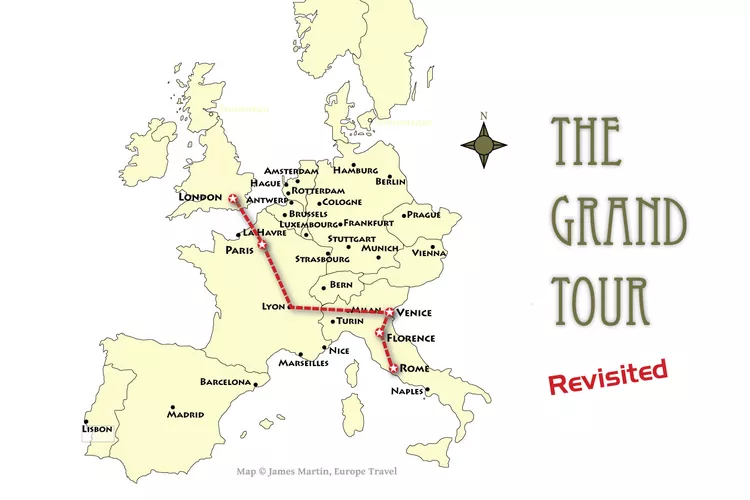Summary
Introduction to the Grand Tour
Young English elites of the seventeenth and eighteenth centuries often spent two to four years traveling around Europe in an effort to broaden their horizons and learn about language, architecture, geography, and culture in an experience known as the Grand Tour.
While the concept of a lengthy Grand Tour is appealing, it may not align with the fast-paced lifestyle of today’s traveler. Fortunately, there are practical alternatives that allow you to experience the essence of Europe in a shorter timeframe.
So, where can a traveler go in Europe today to immerse themselves in the continent’s rich culture? Here are several recommendations for a well-rounded two to three-week itinerary that suits modern travelers.
Modern Grand Tour Structure
The traditional Grand Tour commenced in London, traveled to Paris, and included major cities that served as cultural hubs. The classic itinerary typically featured Rome or Venice alongside side trips to Florence and ancient sites such as Pompeii and Herculaneum.
In today’s fast-paced world, opting for a stable base in a single city for three to four days can be more comfortable than relocating daily. Visitors can truly enjoy each location’s unique offerings, making even a short trip rewarding.
Therefore, this New Grand Tour adapts the historical framework to better suit contemporary travel preferences and takes advantage of today’s efficient transport options. By using an open-jaw ticket to enter Europe in London and exit from Rome, you can maximize your experience with convenient travel by airplanes or trains.
Here’s a suggested agenda for your Grand Tour:
- London: 3 days
- Paris: 3 days (with an excursion to Versailles)
- Venice: 2 days
- Florence: 2 days
- Rome: 4 days
This itinerary totals two weeks. Notice that it does not include Pompeii, as it’s easily accessible as a day trip from Rome, typically taking about two hours to Naples, followed by a short train ride.
Feel free to adjust the duration at each destination based on your interests. For instance, if you prefer to skip London, you can spend more time exploring other parts of Europe.
Moreover, transportation options are plentiful with budget airlines operating across the continent. However, remember that travel times may vary depending on airport locations, whereas trains usually connect directly to city centers.
Grand Tour Expansion Possibilities
If you have three weeks to spare, you can easily extend your journey from the main Grand Tour route. Here are some cities that are conveniently accessible:
From London:
- (Glasgow, Edinburgh, Scotland)
- Amsterdam, the Netherlands
- Brussels, Belgium
From Paris:
- Lyon (Food Capital)
- Dijon (Burgundy)
- Avignon (in Provence)
- Cities in Switzerland (Basel, Geneva, Lucern, Bern)
From Venice:
- (Salzburg, Vienna, Austria)
- Munich, Germany
- Padua (day trip option)
- Ferrara
- Bologna (Food Capital)
From Florence:
- Orvieto, Lucca, Pistoia, and other towns in the Tuscany and Umbria regions.
From Rome:
- Naples
- (Amalfi Coast)
What Can I Do with a Car?
Renting a car offers flexibility and the opportunity to explore the countryside at your own pace. Paris provides straightforward navigation, making it an ideal city for car travel, especially outside of rush hours. However, Italian trains may be more affordable and comprehensive, so consider the balance between train versus car for your travels.
Other Options Along the Grand Tour
Various hotels can help you arrange local tours, like castle visits in the Loire Valley or wine tasting in the Champagne region. In Rome, popular sites include the Villa d’Este, Pompeii, and Hadrian’s Villa. Be sure to inquire at your hotel’s front desk for more options.





